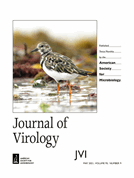ABSTRACT
Dual targeting is a relatively little explored phenomenon by which some proteins are transported to two different subcellular compartments, such as chloroplasts and mitochondria. We previously showed that the R domain and the arm region of the melon necrotic spot virus coat protein could act as a dual-targeting peptide, which shares many relevant features in structure, amino acid composition, and functionality with that of the Thr-tRNA synthetases, the best-studied dual-targeted proteins by far. Here, we show that a viral coat protein hijacks the general pathways for organellar protein import and identifies the coat protein-interacting organellar translocon receptors. Our findings demonstrate for the first time that an exogenous dual-targeted protein uses the general Toc and Tom import systems to reach mitochondria and chloroplasts because it depends on the availability of NbToc75 and NbTom40. Interaction studies, subcellular localization analysis, and viral infection assays in silenced plants revealed the significance of plant receptors, such as the mitochondrion NbOm64 and chloroplast NbToc159A, in this transport. We also show that chloroplast protein translocation impairment could be interlinked with retrograde communication triggering a JA-based response that incidentally impairs viral infection. Future research may profit from our results to better comprehend cellular communication, protein import mechanisms, how preproteins interact with their receptors, and how plant pathogens manipulate host machinery to their ends.
IMPORTANCE
Many plant proteins and some proteins from plant pathogens are dually targeted to chloroplasts and mitochondria, and are supposed to be transported along the general pathways for organellar protein import, but this issue has not

